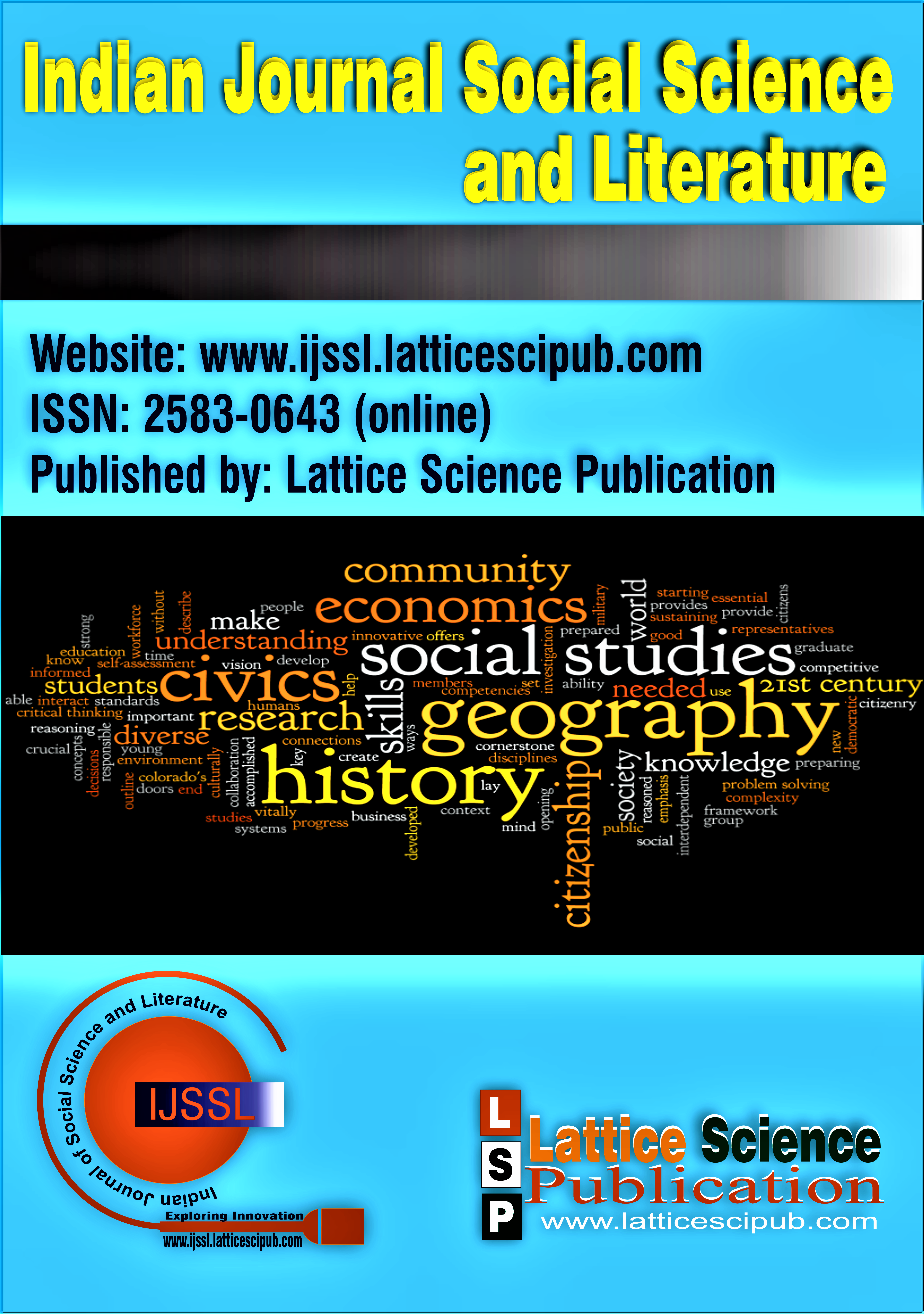Conspectus Articulate on Violent Victimization of Indian-Foreigners in Homicide Crime
Main Article Content
Abstract
In this study, the vulnerability of foreigners to crime in India is examined, with a particular emphasis on the article, which offers an account of a research project that looks at the many crimes committed against Indian expats and investigates their root reasons. The t-test is used to identify significant variations in instances over two years, and the ANOVA statistical tool is used to identify significant overall changes in the victimization rate. The National Crime Records Bureau of India's official website (https://ncrb.gov.in/en/crime-india) served as the study's data source. The data show that the most common crimes committed against Indian foreigners are theft, robbery, and assault. Most of these incidents take place in well-known tourist locations and big cities. The survey also underlines the difficulties foreigners encounter when reporting crimes to the Indian police, such as language hurdles and a lack of legal knowledge.
This study intends to contribute to the development of effective solutions to reduce victimization risks and improve the overall experience of foreign tourists in India by addressing the causes and effects of crimes against Indian foreigners.
Downloads
Article Details

This work is licensed under a Creative Commons Attribution-NonCommercial-NoDerivatives 4.0 International License.
How to Cite
References
Viswanath, Raghavi. "Hate crimes against minorities in India: Locating the value of an international criminal law discourse?" Journal of International Criminal Justice 19.3 (2021): 611-642. https://doi.org/10.1093/jicj/mqab051
Gunjal, Gayatri, and R. K. Upadhyay. "Travel Warning and Safety Index: Moulding India's Image." Issue 2 Int'l JL Mgmt. & Human. 6 (2023): 2213. https://doi.org/10.1080/02508281.2018.1494872
Chaudhary, Manjula. "India's image as a tourist destination—a perspective of foreign tourists." Tourism Management 21.3 (2000): 293-297. https://doi.org/10.1016/S0261-5177(99)00053-9
Parida, Yashobanta, Parul Bhardwaj, and Joyita Roy Chowdhury. "Effects of economic development and crime on tourism in India." Anatolia 29.1 (2018): 63-73. https://doi.org/10.1080/13032917.2017.1384742
Jackson, Mervyn, et al. "City design and its relationship with tourism crimes: a behavior analysis of the urban environment." International Journal of Tourism Anthropology 1.3-4 (2011): 195-207. https://doi.org/10.1504/IJTA.2011.043705
Chugh, Sushma. "Risk perceptions of international female tourists in India." International Tourism and Hospitality in the Digital Age. IGI Global, 2015. 220-233. DOI: https://doi.org/10.4018/978-1-4666-8268-9.ch014
R.A Rahmanbaeva, Problems of Innovative Economic Development. (2019). In International Journal of Recent Technology and Engineering (Vol. 8, Issue 2S11, pp. 4120–4123). https://doi.org/10.35940/ijrte.b1524.0982s1119
Usmanova, A. A., & Usmanov, S. A. (2019). Key Role of Education in the Framework of Achieving the Goals of Sustainable Economic Development. In International Journal of Management and Humanities (Vol. 4, Issue 3, pp. 43–45). https://doi.org/10.35940/ijmh.a0439.114319
Sahu, Dr. S. K. (2019). Occupational Mobility and Economic Development in the Dhobis of Dibrugarh and Duliajan Towns of Assam. In International Journal of Innovative Technology and Exploring Engineering (Vol. 9, Issue 1, pp. 617–623). https://doi.org/10.35940/ijitee.a4497.119119
Mishra, P. (2019). Modeling Investment Decision Through Perceived Risk. In International Journal of Engineering and Advanced Technology (Vol. 8, Issue 6s3, pp. 1638–1643). https://doi.org/10.35940/ijeat.f1306.0986s319
Rao, Dr. D. V. M., Kalgi, Dr. N., & Choudhary, Dr. N. (2021). Consumers Perception on Quick Service Restaurants. In International Journal of Management and Humanities (Vol. 5, Issue 7, pp. 66–70). https://doi.org/10.35940/ijmh.g1268.035721





